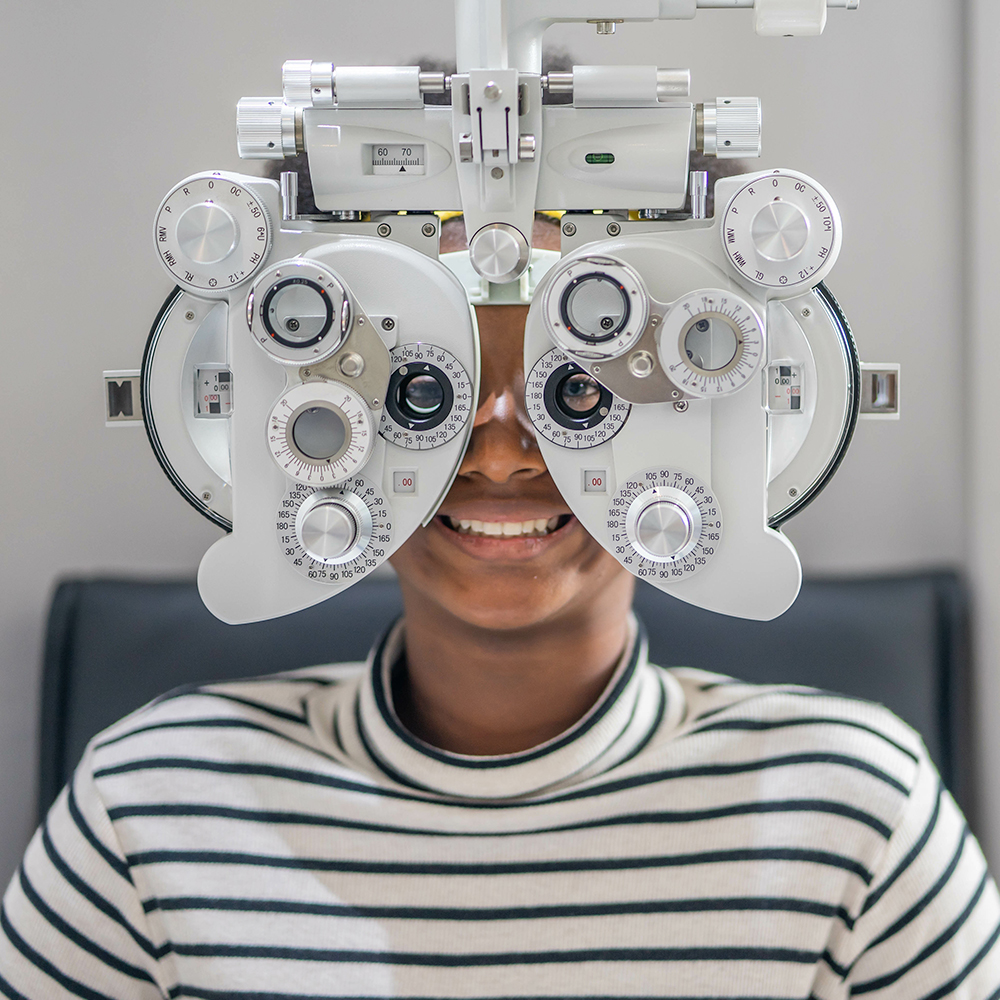Check Out the very best Optometrist Chino for Comprehensive Eye Care
Check Out the very best Optometrist Chino for Comprehensive Eye Care
Blog Article
Exploring the most up to date Technological Advancements in Optometry and What They Mean for Eye Doctors
In the ever-evolving field of optometry, recent technological innovations are improving exactly how practitioners come close to eye treatment. From the precision of Optical Coherence Tomography to the nuanced insights provided by AI-driven diagnostic devices, these advancements are setting new standards in individual evaluation and therapy. Teleoptometry is poised to redefine availability, ensuring that knowledge goes beyond geographical limitations. As these innovations permeate the method, eye doctors are faced with the obstacle of embracing these devices to enhance client end results. The concern continues to be: how will these technical changes redefine the roles and obligations within the career?
Advancements in Diagnostic Tools
Progressing the field of optometry, innovations in diagnostic devices have changed the means eye treatment professionals assess and identify aesthetic impairments and ocular conditions. The past decade has actually witnessed significant technological advancements, allowing more detailed and exact evaluations. Optical Coherence Tomography (OCT), for instance, supplies high-resolution cross-sectional photos of the retina, enabling the early detection of diseases such as glaucoma and age-related macular degeneration. This non-invasive imaging method has come to be important in contemporary optometric method.
Another trick innovation is the introduction of sophisticated corneal topography systems, which map the surface area curvature of the cornea with accuracy. These tools are specifically advantageous for suitable get in touch with lenses and diagnosing corneal problems. Moreover, electronic retinal imaging has actually transformed standard ophthalmoscopy, using in-depth, scenic views of the retina that facilitate detailed visual examinations.
The advancement of wavefront aberrometry has actually also been vital, enabling the evaluation of refractive errors with unrivaled precision (Optometrist Chino). This modern technology assists in customizing restorative lenses and improving medical end results for refractive surgeries. Collectively, these analysis innovations empower optometrists to supply superior patient treatment, ensuring early treatment and tailored therapy techniques, inevitably boosting aesthetic health end results
AI in Patient Monitoring
Building on the foundation of innovative diagnostic tools, the consolidation of artificial knowledge (AI) in client administration represents a transformative jump for optometry. AI systems are progressively used to enhance efficiency, accuracy, and personalization in person care.
Additionally, AI-driven systems help with structured client communications and management processes. Automated organizing, online examinations, and customized follow-up strategies not just improve client satisfaction yet also optimize time administration for experts. These systems can triage clients based upon the necessity of their conditions, guaranteeing that those in vital need get punctual focus.
Furthermore, AI enhances decision-making by giving optometrists with evidence-based recommendations and therapy pathways. By incorporating information from electronic health documents, AI tools offer understandings that notify clinical decisions, minimizing the risk of mistakes and improving person results. As AI remains to evolve, its duty in individual management will likely broaden, reshaping the landscape of optometric care.
Advances in Retinal Imaging
In the realm of optometry, retinal imaging has actually experienced remarkable technological improvements that are enhancing diagnostic capabilities and client care. Innovations such as Optical Comprehensibility Tomography (OCT) and fundus photography have actually transformed just how eye doctors imagine and assess the retina. OCT, particularly, supplies high-resolution, cross-sectional pictures of the retina, enabling for the in-depth exam of its layers. This capacity is indispensable for very early detection and management of conditions like glaucoma, continue reading this diabetic retinopathy, and age-related macular degeneration.
Boosted imaging modalities like OCT angiography are further refining diagnostic precision. This non-invasive method maps blood circulation in the retina, offering critical insights right into vascular wellness without the requirement for dye injections. In addition, adaptive optics technology is being incorporated right into retinal imaging systems to remedy eye aberrations, delivering unmatched photo clarity. Such developments facilitate the recognition of minute retinal changes that can symbolize illness progression.
Additionally, improvements in expert system are increasing retinal imaging by making it possible for automated analysis of big datasets. These systems assist eye doctors in identifying patterns a sign of pathology, thereby boosting analysis precision and performance. Collectively, these technologies are transforming retinal imaging into a foundation of modern-day eye care, boosting outcomes and expanding therapeutic possibilities.
Teleoptometry's Expanding Function
Teleoptometry is progressively coming to be an essential component of eye care, driven by advancements in data and analysis devices. As optometry embraces electronic transformation, teleoptometry assists in remote appointments, enabling eye doctors to extend their services beyond traditional borders. This is especially useful in rural and underserved areas where access to specialized eye care is often minimal. By leveraging high-resolution video clip conferencing and progressed retinal imaging, optometrists can conduct comprehensive eye exams from afar, guaranteeing prompt diagnosis and therapy.
The assimilation of fabricated intelligence (AI) further enhances teleoptometry, allowing the evaluation of aesthetic data and assisting in the detection of eye problems such as glaucoma and diabetic person retinopathy. AI-powered algorithms can swiftly interpret complicated imaging information, giving optometrists with important understandings that strengthen clinical view publisher site decision-making.
Furthermore, teleoptometry sustains connection of care with smooth combination with digital wellness documents (EHRs), permitting optometrists to keep comprehensive patient histories. This makes sure that patients obtain consistent and individualized treatment even when seeking advice from with various professionals.
Despite these benefits, obstacles continue to be, consisting of guaranteeing data safety and security and taking care of individual assumptions. Teleoptometry represents a considerable stride in the direction of even more accessible, efficient, and patient-centered eye care. As innovation develops, its duty is positioned to increase better.

Future Patterns in Eye Care
A myriad of innovative patterns is established to reshape the future of eye care, driven by technological advancements and the evolving requirements of clients. One considerable fad is the assimilation of synthetic knowledge (AI) in diagnostics, which assures to improve the accuracy and efficiency of eye assessments. AI formulas can assess vast amounts of data from retinal photos, potentially finding problems like diabetic person retinopathy and glaucoma earlier than typical methods.
In addition, personalized medication is getting traction in optometry, with genetic screening notifying customized therapy strategies. This method intends to enhance patient results by customizing interventions to individual genetic profiles. Wearable innovation, such as clever call lenses, is also imminent, providing real-time monitoring of intraocular stress or glucose levels, therefore supplying continual insights into systemic and ocular health and wellness.
The fostering of enhanced fact (AR) and online truth (VR) in training and client education is another arising trend. These modern technologies supply immersive experiences that can enhance understanding and skills both for optometrists and patients. As these fads evolve, eye doctors have to remain abreast of technological developments to provide innovative treatment, making sure better patient results and fulfillment in the vibrant landscape of eye care.
Conclusion

Collectively, these analysis innovations equip eye doctors to supply remarkable client treatment, making sure very early intervention and customized therapy strategies, eventually improving visual health end results.

As these technologies continue to advance, optometrists content must adjust and incorporate them into method, inevitably optimizing process performance and elevating the requirement of eye treatment supplied to patients.
Report this page